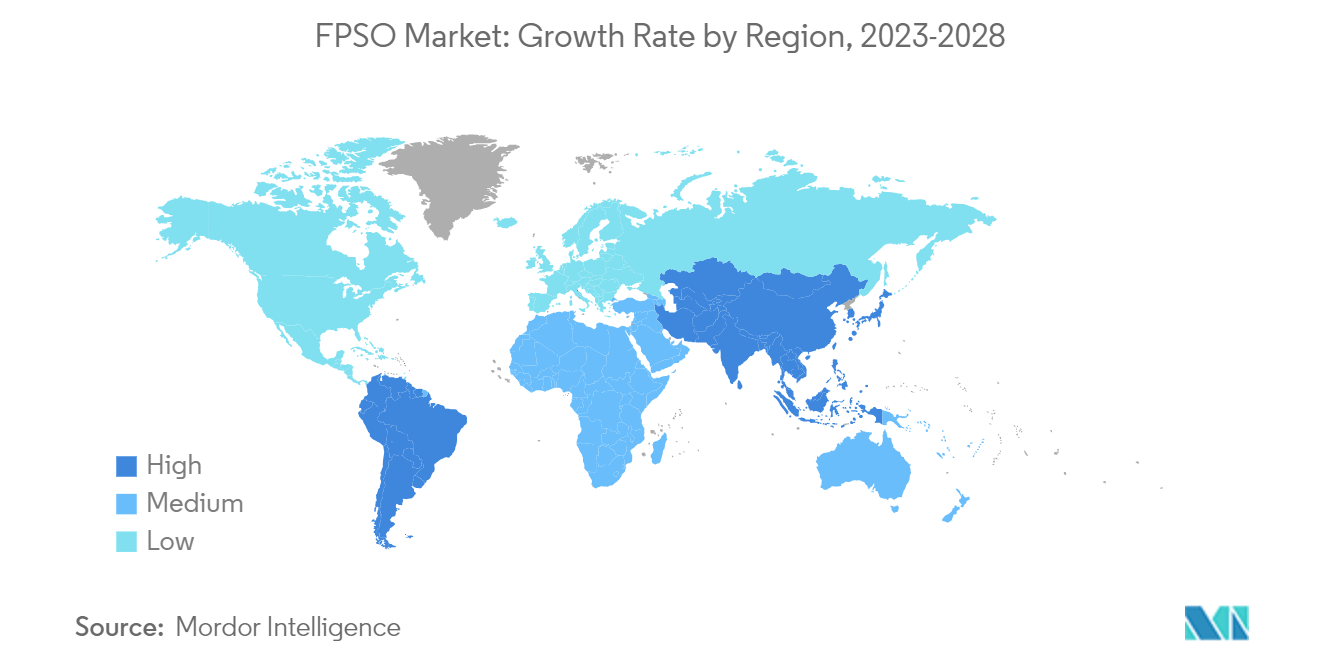Market Trends of FPSO Industry
Contractor-owned FPSO Expected to Dominate the Market
- There are three primary methods for procuring FPSOs: new build, conversion of an existing vessel, and redeployment of an existing unit. Among these options, redeployment poses several challenges due to the highly customized nature of the FPSO for a specific field. As a result, operators have predominantly favored the new build and conversion approaches, often relying on third-party contractors with specialized expertise for these services over the past two decades.
- Contractor-owned FPSOs offer cost advantages over operator-owned FPSOs or fixed platforms. Contractors, who specialize in designing, constructing, and operating FPSOs, can achieve economies of scale and optimize their fleet utilization, resulting in reduced operator costs. This makes contractor-owned FPSOs an attractive option for operators seeking cost-effective solutions.
- Contractor-owned FPSOs are typically available for lease, providing operators greater flexibility in field development. Leasing allows operators to access and deploy FPSOs with minimal upfront capital investments, benefiting smaller operators or projects with uncertain production profiles.
- With the increasing offshore activities, the cost of exploration and production activities and outsourcing the FPSO-related activities to contractors. This allows operators to allocate their resources and attention to areas where they can create the most value, leaving the FPSO operations to specialized contractors.
- For instance, according to Baker Hughes Rig Count, at the end of 2022, there were around 231 offshore rigs, the offshore rigs witnessed about 14.9% campared to previous year, signifying an increase in offshore exploration and production activities, consequently driving the demand for FPSOs.
- In May 2023, MODEC, a Japanese FPSO supplier, secured a contract from Equinor to supply an FPSO vessel for the BM-C-33 block in the Campos Basin offshore Brazil. In addition to delivering the FPSO, expected to be completed by 2027, MODEC will provide Equinor with operations and maintenance services for the first year of the FPSO's oil production. Subsequently, Equinor plans to take over the operational responsibilities of the FPSO.
- Therefore as per the points mentioned above, the Contractor-owned FPSO is expected to dominate the market during the forecasted period.

South America Expected to Dominate Market
- The South American region is anticipated to exert the highest influence on the global FPSO market. Particularly, Brazil and Guyana have emerged as key players in this market, experiencing a significant surge in demand for FPSOs in recent years.
- South America has significant offshore oil and gas reserves, particularly in Brazil and Guyana. These reserves are located in deepwater and ultra-deepwater areas, requiring FPSOs for efficient production, storage, and offloading. The potential for large-scale discoveries and production in these regions drives the demand for FPSOs.
- For instance, in November 2022, Diamond Offshore secured a drilling program contract from Petrobras in Brazil for its ultra-deepwater semi-submersible rig, Ocean Courage. The contract spans four years, with an unpriced option to extend for another four years. The firm term of the contract is estimated to be valued at around USD 429 million, which includes a mobilization fee and provision of services.
- Moreover, South America has extensive pre-salt reserves, especially in Brazil's Santos and Campos Basins. These reserves are located beneath thick layers of salt, presenting technical challenges for exploration and production. FPSOs are well-suited for these challenging environments, as they can safely operate in deepwater and handle the complex processing requirements of pre-salt fields.
- Therefore, as per the above points, the South American region is expected to dominate the FPSO market during the forecasted period.



